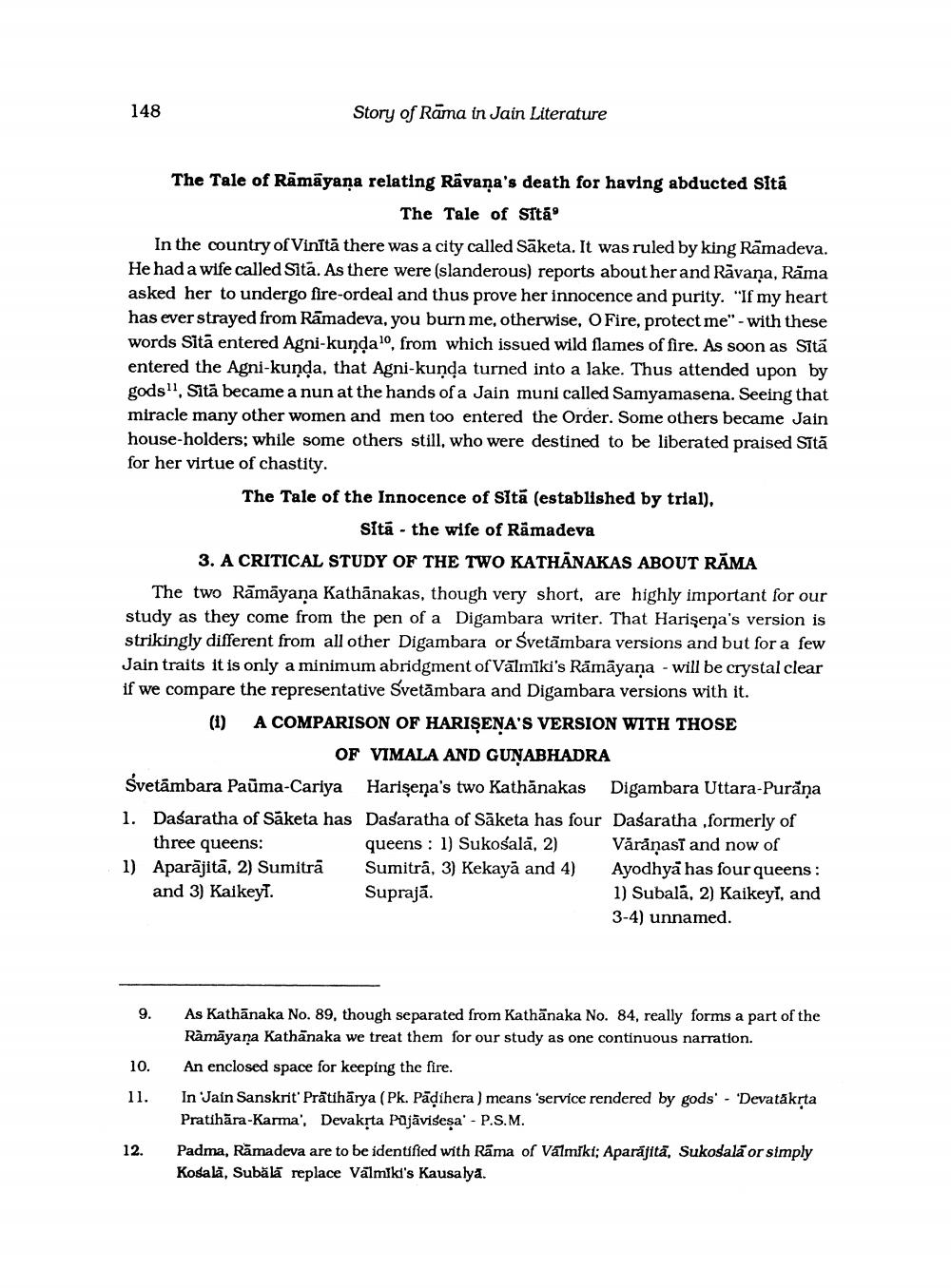________________
148
The Tale of Rāmāyaṇa relating Rävana's death for having abducted Sita The Tale of Sitā
In the country of Vinīta there was a city called Saketa. It was ruled by king Ramadeva. He had a wife called Sita. As there were (slanderous) reports about her and Rāvana, Rāma asked her to undergo fire-ordeal and thus prove her innocence and purity. "If my heart has ever strayed from Ramadeva, you burn me, otherwise, O Fire, protect me" - with these words Sitä entered Agni-kunda10, from which issued wild flames of fire. As soon as Sītā entered the Agni-kunda, that Agni-kunda turned into a lake. Thus attended upon by gods", Sita became a nun at the hands of a Jain muni called Samyamasena. Seeing that miracle many other women and men too entered the Order. Some others became Jain house-holders; while some others still, who were destined to be liberated praised Sītā for her virtue of chastity.
The Tale of the Innocence of Sita (established by trial),
Sita the wife of Ramadeva
3. A CRITICAL STUDY OF THE TWO KATHANAKAS ABOUT RĀMA
The two Rāmāyaṇa Kathānakas, though very short, are highly important for our study as they come from the pen of a Digambara writer. That Harişena's version is strikingly different from all other Digambara or Svetambara versions and but for a few Jain traits it is only a minimum abridgment of Valmiki's Rāmāyaṇa - will be crystal clear if we compare the representative Svetämbara and Digambara versions with it.
(1) A COMPARISON OF HARIŞENA'S VERSION WITH THOSE
OF VIMALA AND GUNABHADRA Harisena's two Kathanakas Dasaratha of Saketa has four queens: 1) Sukosalā, 2) Sumitra, 3) Kekaya and 4) Suprajā.
Story of Rama in Jain Literature
Svetambara Pauma-Cariya 1. Dasaratha of Saketa has three queens:
1) Aparajitä, 2) Sumitra and 3) Kalkey!.
9.
10.
11.
12.
Digambara Uttara-Purăņa Dasaratha, formerly of Vārāṇasī and now of Ayodhya has four queens: 1) Subala, 2) KaikeyĽ, and 3-4) unnamed.
As Kathānaka No. 89, though separated from Kathanaka No. 84, really forms a part of the Rāmāyaṇa Kathānaka we treat them for our study as one continuous narration.
An enclosed space for keeping the fire.
In 'Jain Sanskrit' Pratihārya (Pk. Pāḍihera) means 'service rendered by gods' - 'Devatakṛta Pratihāra-Karma', Devakṛta Pajaviseṣa' - P.S.M.
Padma, Ramadeva are to be identified with Rama of Valmiki; Aparajita, Sukodala or simply Kosala, Subälä replace Valmiki's Kausalya.




